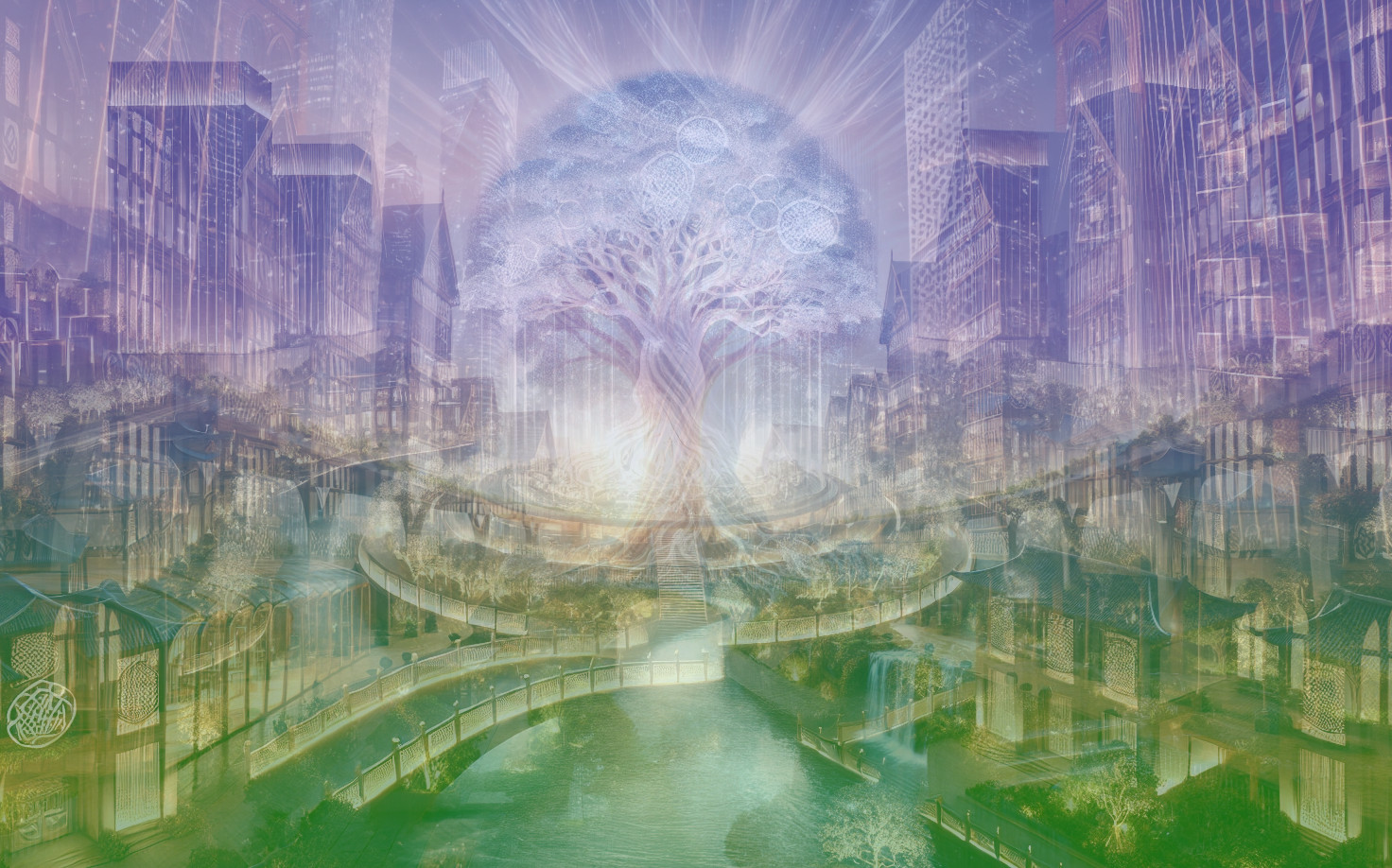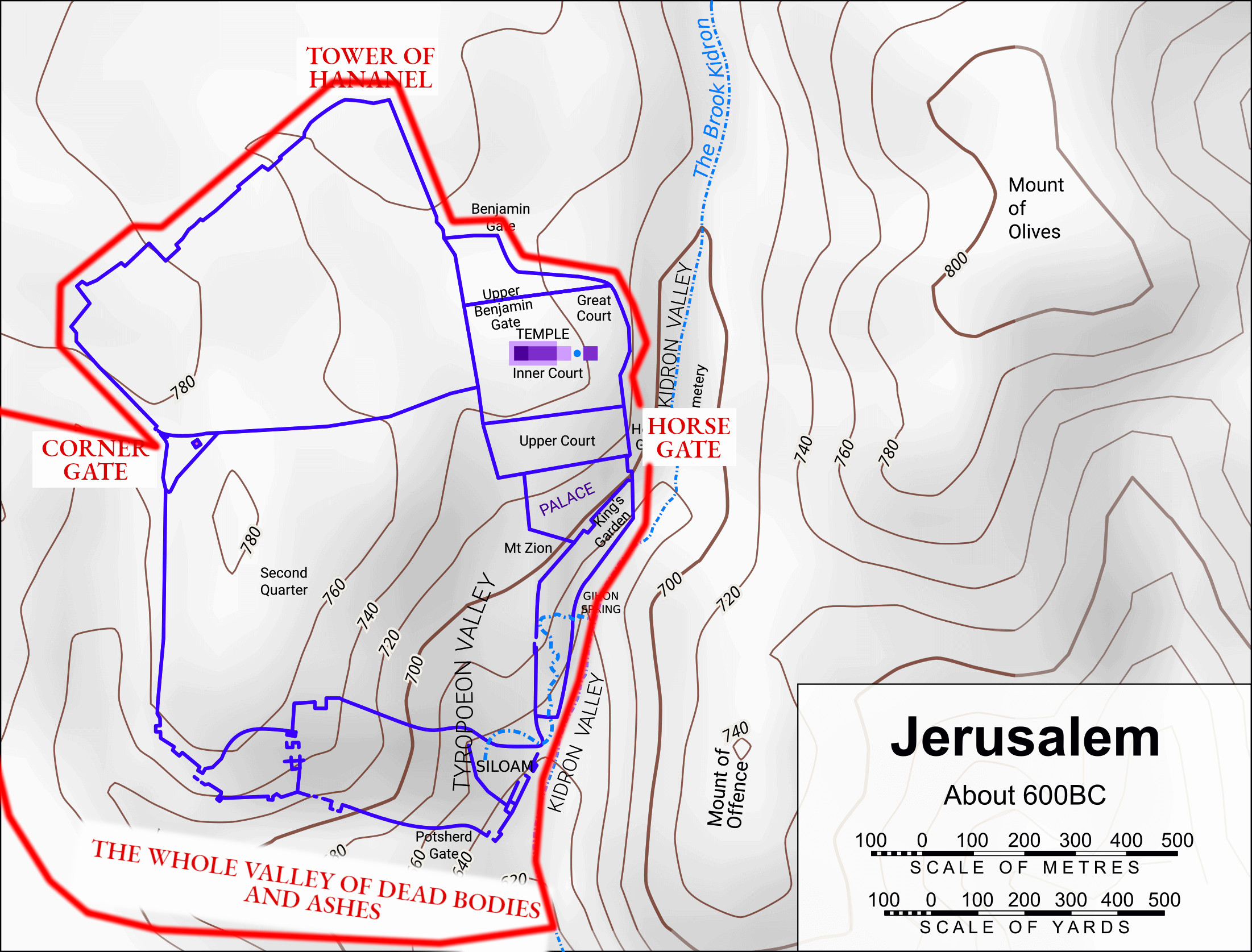


Jeremiah lived in times much like ours—marked by loss of faith, loss of vision, and a readiness to follow anyone who spoke with authority, no matter how misguided. The first twenty-nine chapters of Jeremiah expose the nation's folly. And the prophet brings them a desperate warning of the coming downfall, dispossession, and genocide.
Then, in chapters thirty to thirty-three, Jeremiah shifts to a vision of ultimate hope: a future where God will reconnect, restore, rebuild, and renew. These chapters are known as the "Book of Consolation." Today we are going to focus on chapter thirty-one.
And this "Book of Consolation" offers profound, life-changing insights into God's restoration plan for His creation—insights that are as relevant and exciting for us today as they were for Jeremiah’s audience.
So let's consider the CONTEXT of this prophecy of Jeremiah.
It was a tumultuous period for Judah. One hundred and forty years previously the Northern Tribes of Israel had lost control of their land, and were subject to the Assyrians. So the kingdom of the tribe of Judah is the only one left. It too had seen the Babylonians attack and win territory, and deport many to Babylon. The first exile occurred in 597 BCE. Jeremiah begins to prophecy much worse times to come, and the destruction of Jerusalem. Thus it was that just 11 years later, Jerusalem was largely razed to the ground, including the complete destruction of Solomon's temple built 400 years previously.
Sadly Jeremiah's warnings to Judah were ignored and mocked at best, or used as evidence against him at worst, leading to his imprisonment for a period. But let us take a look at the KEY THEMES in chapter 31.
Note the first key theme is God's EVERLASTING LOVE!
Then note the second key theme - God in the role of THE SHEPHERD
Note that the reference to Israel here is to the Northern Tribes, which 140 years earlier had been conquered and deported, many fled, emigrated across the world. So that today there are people groups all over the world who claim to be descended from those tribes.
Some definitely are supported by historical evidence such as the Samaritans descended from Ephraim and Manassah living in Jerusalem and the West Bank today.
Some almost certainly are supported by DNA evidence such as Ethiopian Jews descended from Dan, Indian Jews descended from Manassah, Lemba people in Southern Africa.
Some probably or possibly are, supported by their own tribal oral tradition, such as Pashtun tribes in Afghanistan and Pakistan, Japan, China and even native American Indians.
So this portrays God as a shepherd gathering His flock, emphasizing His care and guidance.
Here's the next key theme - it is HOPE FOR THE WEEPING.
The Assyrians came and took away the children of the Northern Tribes, the Babylonians will come and they will take away the children of the Southern Tribe of Judah. These children will be inculcated in pagan ways, will learn a pagan culture, will lose contact with the God Jehovah, will forget the law and the sacrifices, and the ancient tales of God's mercy. To all intents and purposes, they are irretrievably lost. So the parents weep.
And the next Key Theme is when Jeremiah says we need an understanding of where we have gone wrong and WE NEED TO FIND OUR WAY BACK.
And then of course the Key Theme we are so familiar with - the famous declaration of a NEW COVENANT
The central promise of the chapter is a new covenant where God’s law will be written on people’s hearts, signaling an intimate and transformative relationship between God and His people.
Then what is the final Key Theme? It is GOD'S COMPLETE RESTORATION - HIS TOTAL REVAMP OF THE CITY.
What a great climax to this vision of renewal, rejuvenation, reconstruction, revitalisation. The city restored, and as we shall see, it was to be built back bigger and better.
Then we see Jeremiah demonstrate his faith that God will bring back his people, and restore the land, and rebuild the city. What does he do? He BUYS A FIELD!
Remember that the army of a huge empire is just about to invade and either destroy or steal everything. To buy a piece of land at a time when the invaders were at the door ready to take everything seemed crazy. But Jeremiah is underlining his committment to LIVE IN THE LIGHT OF THE HOPE OF THE PROMISE. Read about it at the start of Jeremiah 32.

So let us look a bit deeper at this prophecy. How does it relate to me and my loved ones two millenia later? And are we even right to apply this prophecy to our own lives? To find out, we have check out the Key Themes again, this time by the light given by the life and words of Jesus Christ. Here we go:
Key Theme:EVERLASTING LOVE
John, who lived alongside Jesus for three years, heard his teaching, saw his compassion for Jews and Gentiles alike, says For God so loved the world.
Note the breadth of his love - the entire world. Scripture tells us that God has compassion on all that he has made!
Key Theme:THE SHEPHERD
John hears Jesus say, I have other sheep that are not of this sheep pen. I must bring them also. They too will listen to my voice, and there shall be one flock and one shepherd. This speaks of a wider restoration than simply the Jewish nation. How wide - let's see!
Key Theme:HOPE FOR THE WEEPING
Jeremiah hears God say, Keep your voice from weeping, band your eyes from tears, for there is a reward for your work. And they shall come back from the land of the enemy.
Now can this apply to you and I? The context was parents distraught that their children had been taken away to a foreign land. But Matthew in writing his gospel in Matt 2:18 confirms that this it is okay to take this prophecy, given to Jeremiah centuries previously in different circumstances, and apply it to this set of women in Bethlehem whose infants have been slaughtered by King Herod.
To all intents and purposes, those infants are irretrievably lost. So the parents weep.
The infants are dead and buried. But the parents are not to lose hope. These children are still in God's care.
This opens the scope of reassurance far wider. It originally is limited to specific parents in Israel worrying about their stolen children. Matthew applies it to any parent of any ethnicity whose child was slaughtered by King Herod. The only way he can do that is to understand that all parents' concern for their children is to be resolved - weeping is to replaced by hope. And not false hope!
Key Theme:WE NEED TO FIND OUR WAY BACK
Jeremiah advised everyone to look back at how they got into the mess they are in, in order that they can find their way back.
Jesus' story of the Loving Watchful Father (a.k.a the Prodigal Son) confirms that we all have to do this - it speaks of reflection and determination to find our way back to God.
Key Theme:NEW COVENANT
Then God says he will directly change the hearts and minds of everyone rather than them being constrained by external law. The New Testament applies that to you and I. It is referenced in Hebrews 8:10-12, Hebrews 10:16-17, 2 Corinthians 3:3, Romans 2:29. Paul clarifies that God's mercy and consolation extend beyond those who are genetically Jewish, since it is a matter of the heart's desire, rather than conformance to an externally imposed law.
Key Theme: GOD'S COMPLETE RESTORATION - HIS TOTAL REVAMP OF THE CITY
So we have seen that this prophecy of Jeremiah has broadened in it's application. Now watch this! See just how broad it is in the full extent of its scope.
The route specified by Jeremiah above is marked by the red line on the map below. You will find the Tower of Hananel at the top - the north of the city. Then proceed anti-clockwise.

All the places enclosed by that red line are now included in the city, and the entire area will be sacred for the Lord.
Jeremiah states God's intention that the greatly expanded city will finally accommodate those areas which were (and still are) outside the city walls. This includes Gareb and Goah (off the map to the west) - which may refer to locations reserved for people who had leprosy and other diseases (see footnote). The city rubbish dump ends up included within the city. The city boundary now encompasses the cemetary by the brook Kidron.
More significant though is that the valley of dead bodies and ashes refers to Gehenna. That place of shame too will be brought within the sacred city.
God indicates that even those previously tossed into the shame of Gehenna will find themselves in a sacred place. (v40)
Gehenna, that place that the King James Bible and many modern translations of scripture have translated into the word "Hell" was in fact not hell, but that place of shame ...
Shame because centuries earlier, the children of Israel got involved in the worship of Baal there, and following the lead of King Ahaz and King Manasseh, actually sacrificed their children by burning them alive on the altar of Baal.
Shame highlighted in Jeremiah 7:31 and in Jeremiah 19:5 and in Jeremiah 32:35 when he records that God insisted that the practice of burning children in Gehenna was so appalling that it had never even entered his mind.
Shame because all the excrement from the hundreds of animals that had to be kept in Jerusalem was taken out through the DUNG GATE and thrown there.
Shame because as Jesus indicated, those who were criminals vilified by society were not afforded a proper burial but instead were thrown out there like so much rubbish.
You see the worst of all people who end up being thrown out onto the city's rubbish dump when they die ultimately find that that place of shame where they find themselves, is not a place of shame any more, but a place sacred - set aside for the purpose of God.
The prophecy tells us that what our bibles wrongly translate as Hell, ends up being part of the New Jerusalem!
Because as we know full well, there can never be true consolation simply by expanding the borders of the geographical physical city of Jerusalem. This prophecy with all it's New Testament references to a New Covenant refers to the New Jerusalem.
John tells us when recounting his Revelation that there is a throne at the centre of that New Jerusalem. And the one seated on the throne says in a loud voice:
You remember that Jeremiah gave the prophecy, and then he went out and bought a field, because he believed in God's promise of restoration. So let us, like Jeremiah, renew our committment to LIVE IN THE LIGHT OF THE HOPE OF THE PROMISE.
(Footnote. In the interests of full transparency regarding Gareb and Goah. The evidence is simply that the location names are similar to disease and leprosy. Yes, I know, pretty thin.)

